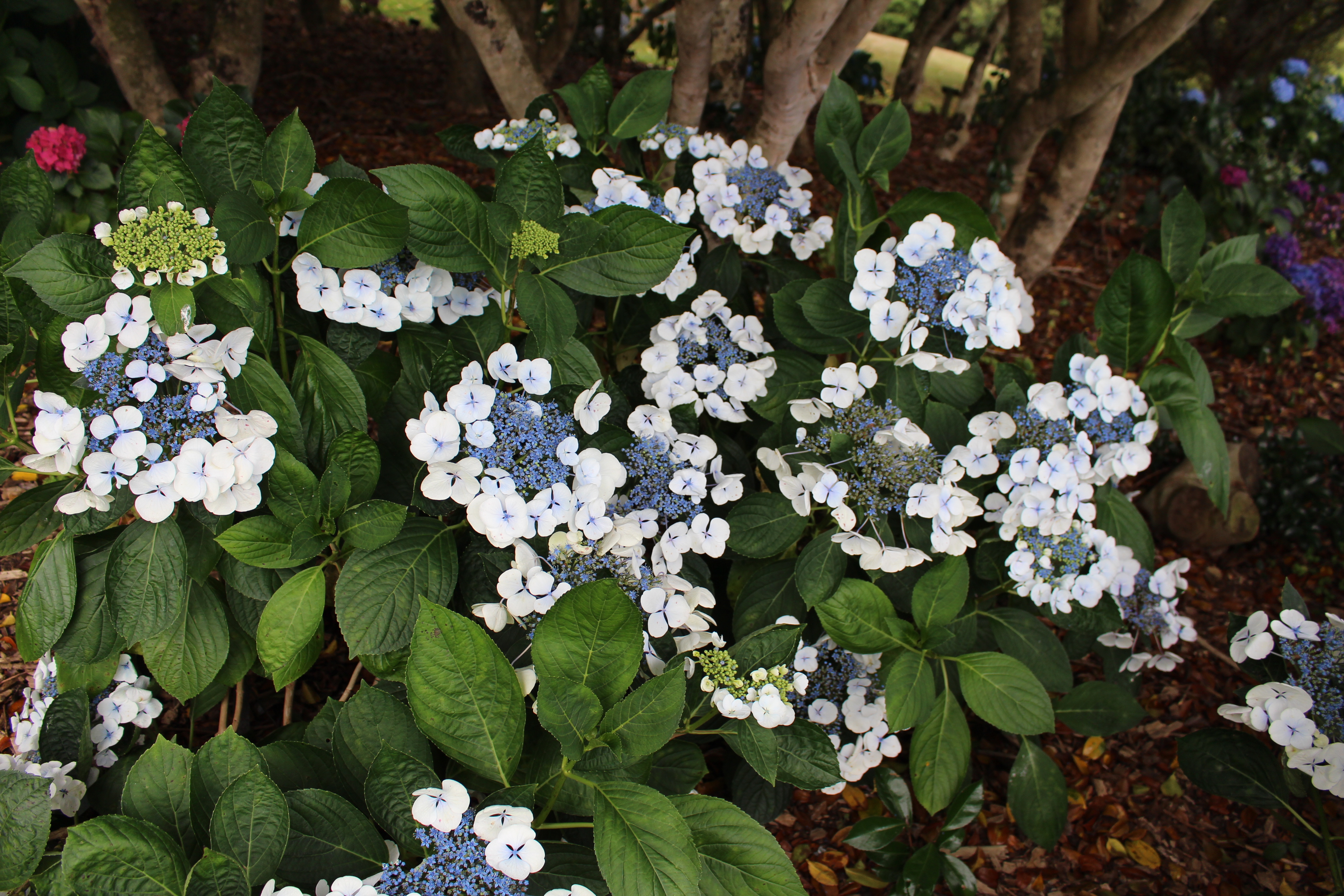Apply mulch annually to suppress weeds and conserve moisture. Organic material, such as sawdust and bark, contribute to soil structure. However, make sure to keep mulch away from plant stems. The first summer and autumn after planting are critical for young plants, so water thoroughly during dry periods. A light application (50g/m2) of general-purpose fertiliser in spring is beneficial. Sprinkle evenly and work into the top 2 to 3cm of the soil, taking care not to damage surface roots.
Prune off any old flowers after flowering. Delay pruning until the danger of frost has passed, as the spent flowers and leaves protect buds from damage. All canes that have flowered and thin, crowded and damaged shoots should be cut to the base. Leave shoots which have not flowered, as these will flower next season. Check regularly for pests and diseases, which can have serious debilitating effects on young plants.
Flower colour is affected by soil acidity (pH). Acid soils produce blue flowers and alkaline soils pink flowers. White flowers are unaffected. Most Auckland soils are acidic. Therefore, blue flowers tend to predominate. In early spring, the blue colour may be intensified by watering plants with a solution of 44gm of aluminium sulphate in 9 litres of water. Use the same solution for container-grown plants. Coastal gardens with deposits of shell in the soil are usually alkaline, producing pink flowers. The pink colour can be intensified with applications of lime in autumn each year. Heavy applications of lime up to 500g/m2 can be applied to change blues to pinks. Such efforts usually result in intermediate purplish tones rather than a clear pink. Grow plants in containers using an alkaline potting mix for pinks and an acid mix for blues.


.jpg?width=1200&height=800&v=1d4024ddd7e5b50)

.jpg?width=1200&height=1200&v=1d4024dceb89e50)

.jpg?width=1200&height=1200&v=1d5569224d63650)
 .jpg?width=1200&height=1200&v=1d4024df6ce2770)
.jpg?width=1200&height=1200&v=1d55676a892f2b0)
 .jpg?width=1200&height=1200&v=1d4024e3b65f7f0)